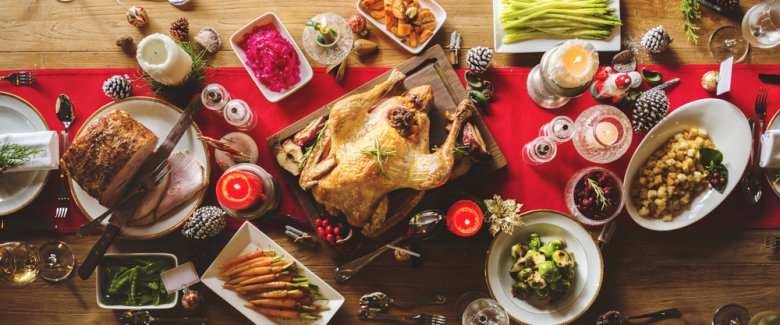
21 Dec The typical Italian Christmas feast
The Christmas lunch feast is a moment of anticipated family reunion. Even those who sit through the Christmas eve dinner will, the next day, still tired from the night’s festivities, probably prepare themselves for another day surrounded by the warmth of their relatives, the children’s laughter, the opening of the presents and the many, many delicacies to be enjoyed. Each family has their own personal culinary traditions which, of course, are tied to the personal tastes of their family members. There are, however, many dishes that are present with particular frequency on the tables of most Italians.
A menu in line with tradition begins with appetizers. The delicious Italian cold cuts are a must. Soppressa and sausage of Luganega in Veneto, mocetta in Valle d’Aosta and culatello in Emilia Romagna, just to name few.
As for the first course, stuffed pasta is the protagonist of these festivity days, with anolini, cappelletti and tortellini in broth, or other types of stuffed pasta, such as green tortelloni, served dry and seasoned with a simple tomato sauce. The famous Italian “ragù” meat sauce is, instead, mostly used to season tagliatelle or lasagna, and is frequently found on tables throughout Italy on Christmas Day. They are all rich and tasty dishes. And just when you feel you cannot have anymore… the sumptuous second course arrives.
In most Italian regions, the absolute protagonist of this course seems to be the capon, served in many different ways. In Campania it’s served stuffed, while in Lombardy it is accompanied by the wonderful mustard of Cremona. The capon is also a staple on the Christmas tables in Friuli and Marche, where it’s served oven-roasted. Boiled meat is another dish that is frequently present on tables throughout Italy. In Veneto, for example, it is served with cren (a horseradish sauce) or pearà (a sauce made of breadcrumbs, egg, marrow and lots of pepper), or with polenta, which is also used to accompany cod or sausages in Valle d’Aosta and cotechino in Friuli Venezia Giulia.
Finally, after a hearty round of desserts, you can’t skip out on the dried fruits and nuts. Hazelnuts, peanuts and walnuts to munch on while you continue to chat with your relatives, and the leftover shells can be used as chips for the inevitable family bingo games!

